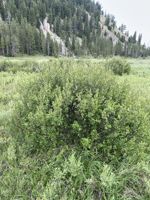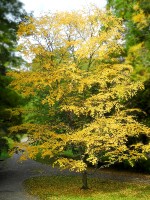Mon-Fri 9am - 5pm Mountain time
Sweet Birch (Black Birch) vs Dwarf-Bog Birch
Betula glandulosa
Betula lenta
CUSTOM GROW
NOT AVAILABLE THIS SEASON - MIGHT RETURN
Dwarf-Bog Birch is a native, cold-hardy shrub that can be found across most of Canada. Its preference for moist soils and the extensive root system make it well-suited for riparian zone plantings, soil stabilization, and erosion control projects.
It features small, round, leathery leaves with scalloped edges and produces small, cone-like catkins. A distinguishing characteristic of the Dwarf-Bog Birch is the presence of large resin glands on the branches and the undersides of the leaves. These resin glands are the reason for its scientific name, Betula glandulosa.
Note: We use Dwarf-Bog Birch for Betula glandulosa. This species is also known by many other common names, including Bog Birch, Dwarf Birch, Glandular Birch, and others. Please confirm the scientific name to ensure you are ordering the correct plant.
Sweet Birch (Black Birch) is an attractive tree with a rounded shape native to eastern North America that would be a good addition to landscapes. It has a conical growth shape when young and as it ages the shape becomes more rounded. When the leaves, shoots, or bark are crushed they give off a sweet scent, which is what gives the Sweet Birch its name.
In early spring, the trees can be tapped and the sap used to produce syrup or fermented and made into birch beer. Pollinators and birds are attracted to the Sweet Birch as the pollen and seeds serve as a good food source. In the fall, the leaves turn golden yellow which will brighten your landscape.
The inner bark has a strong wintergreen scent and has been used to produce oil of wintergreen. Small twigs and bark of the tree can be boiled in water to make a tasty Sweet Birch tea.

